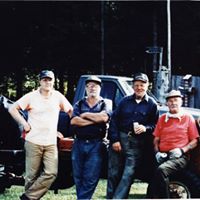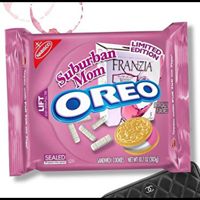Gregory L Weber
age ~54
from Sammamish, WA
- Also known as:
-
- Gregory Lee Weber
- Gregory I Weber
- Gregory L Webber
- Greg L Weber
Gregory Weber Phones & Addresses
- Sammamish, WA
- 17522 32Nd Ave SE, Bothell, WA 98012 • 4254833438
- Mill Creek, WA
- Sterling Heights, MI
- Rochester Hills, MI
- Columbus, IN
- Snohomish, WA
Work
-
Company:Lowes home improvement centerMar 2005
-
Position:Electrical specialist
Education
-
School / High School:Macomb Community College- Roseville, MIJul 1998
-
Specialities:Associate in Philadelphia PA
Isbn (Books And Publications)


The Law of Hazardous Wastes and Toxic Substances in a Nutshell
view sourceAuthor
Gregory S. Weber
ISBN #
0314211667

Medicine Doctors

Gregory A. Weber
view sourceSpecialties:
Gastroenterology
Work:
HealthpartnersHealthpartners Riverway Clinic
601 Jacob Ln, Anoka, MN 55303
7635874400 (phone), 7635874205 (fax)
601 Jacob Ln, Anoka, MN 55303
7635874400 (phone), 7635874205 (fax)
Languages:
Chinese
English
French
German
Spanish
Vietnamese
English
French
German
Spanish
Vietnamese
Description:
Dr. Weber works in Anoka, MN and specializes in Gastroenterology. Dr. Weber is affiliated with Mercy Hospital.
Us Patents
-
System And Method For Determining Purge Valve Flow Tolerance
view source -
US Patent:20040134472, Jul 15, 2004
-
Filed:Jan 15, 2003
-
Appl. No.:10/342981
-
Inventors:Mark Duty - Goodrich MI, US
Gregory Weber - Commerce Twp MI, US -
International Classification:G05D001/00
-
US Classification:123/698000, 123/520000, 701/109000
-
Abstract:An arrangement for determining purge valve flow tolerance for use with evaporative emissions control systems includes developing an equation based on data relating purge valve duty cycle to flow, wherein the equation describes a flow curve with reference to a first axis and a second axis. The arrangement further includes using the equation as a base equation for flow, and adapting the equation for part-to-part tolerance as a function of an intercept point of the equation with respect to the first axis, wherein the first axis relates to duty cycle.
-
Purge Vapor Start Feature
view source -
US Patent:63183455, Nov 20, 2001
-
Filed:Aug 19, 1999
-
Appl. No.:9/377234
-
Inventors:Gregory T. Weber - Commerce Township MI
Mark J. Duty - Davison MI -
Assignee:DaimlerChrysler Corporation - Auburn Hills MI
-
International Classification:F02M 3302
-
US Classification:123520
-
Abstract:A fuel control system is provided including a fuel tank and a purge vapor collection canister interconnected with an internal combustion engine. A purge vapor canister vent valve selectively seals the purge vapor canister from atmosphere such that the fuel tank, purge vapor canister, and engine intake manifold form a closed system. Upon a cold engine start, a purge valve disposed between the purge vapor canister and the engine intake manifold is opened such that the pressure differential between the engine intake manifold and the remainder of the system causes fuel vapor collected within the dome portion of the fuel tank to be drawn through the purge vapor canister and into the intake manifold. Simultaneously therewith, the amount of fuel injected by the fuel injectors to the engine is reduced such that a desired amount of total fuel delivery is established. As the pressure differential between the intake manifold and the remainder of the closed system changes over time, flow rate of purge vapors from the fuel tank slows down.
-
Method Of Estimating Exhaust Gas Recirculation In An Intake Manifold For An Internal Combustion Engine
view source -
US Patent:55379770, Jul 23, 1996
-
Filed:Jan 30, 1995
-
Appl. No.:8/380865
-
Inventors:Peter G. Hartman - Bloomfield MI
Keith L. Jones - Woodhaven MI
Thomas A. Larson - Bloomfield Hills MI
Gregory T. Weber - Commerce Township MI -
Assignee:Chrysler Corporation - Auburn Hills MI
-
International Classification:F02P 514
-
US Classification:123422
-
Abstract:A method of estimating exhaust gas recirculation in an intake manifold for an internal combustion engine includes the steps of determining a volumetric efficiency value of the intake manifold, determining whether a speed of the engine is accelerating, getting a manifold unfilling constant if the speed of the engine is not accelerating, getting a manifold filling constant if the speed of the engine is accelerating, calculating a K-factor based on the volumetric efficiency value and either the manifold filling constant or manifold unfilling constant, and using the K-factor to modify spark of the engine.
-
Fuel Multiplier Transfer From Dynamic Crankshaft Fueling Control To Oxygen Sensor Operation
view source -
US Patent:6085734, Jul 11, 2000
-
Filed:Dec 15, 1998
-
Appl. No.:9/211939
-
Inventors:Kenneth P. DeGroot - Macomb Township MI
Bruce H. Teague - Grosse Pointe Park MI
Gregory T. Weber - Commerce Township MI
Jeremy M. Smith - Farmington MI -
Assignee:Chrysler Corporation - Auburn Hills MI
-
International Classification:F02D 4114
-
US Classification:123696
-
Abstract:A method is provided for controlling the delivery of fuel to an engine of an automotive vehicle equipped with a dynamic crankshaft fuel control system and an oxygen sensor feedback based fuel control system. The method includes determining an averaged combustion metric from the dynamic crankshaft fuel control system. The combustion metric is compared to an allowable engine roughness value and a dynamic crankshaft fuel control fuel multiplier is adjusted based on the comparison via a proportional-integral-derivative control calculation. Thereafter, the integral term of the dynamic crankshaft fuel control system's proportional-integral-derivative control calculation is stored. If it is time to switch fuel control from the dynamic crankshaft fuel control system to the oxygen sensor feedback fuel control system, the stored integral term of the dynamic crankshaft fuel control system's fueling multiplier is transferred to the proportional-integral-derivative calculation of the oxygen sensor feedback fuel control system. As such, the last integral term used in determining the fuel multiplier of the dynamic crankshaft fuel control system is used as the first integral term determining the fuel multiplier of in the oxygen sensor feedback fuel control system. As such, the transition from one fuel control system to the other is smoothed.
-
Purge Fueling Delivery Based On Dynamic Crankshaft Fueling Control
view source -
US Patent:62375806, May 29, 2001
-
Filed:Aug 19, 1999
-
Appl. No.:9/377320
-
Inventors:Kenneth P. DeGroot - Macomb Township MI
Mark J. Duty - Davison MI
Gregory T. Weber - Commerce Township MI -
Assignee:DaimlerChrysler Corporation - Auburn Hills MI
-
International Classification:F02B 7508
-
US Classification:123698
-
Abstract:A fuel control system is provided for enhancing the fueling strategy of a vehicle at start up when fueling is being supplemented with purge vapors from the fuel tank. The system includes monitoring the purge vapor flow rate from the purge vapor control system to the engine at start-up. A dynamic crankshaft fuel control fuel multiplier is then calculated based on engine roughness. If the engine is operating rough during purge vapor fueling, the amount of injected fuel is adjusted according to the fuel multiplier. Once oxygen sensor feedback is available, the dynamic crankshaft fuel control fuel multiplier is recalculated based on the oxygen sensor goal voltage. If necessary, the amount of injected fuel may be readjusted with the updated fuel multiplier. Once the engine is warm, the purge vapor fueling stops and the present methodology ends.
-
Method For Processing Crankshaft Speed Fluctuations For Control Applications
view source -
US Patent:59016841, May 11, 1999
-
Filed:Sep 14, 1998
-
Appl. No.:9/152762
-
Inventors:John Fiaschetti - Rochester Hills MI
Kenneth DeGroot - Macomb Township MI
Mark Borland - Birmingham MI
Gregory Weber - Commerce Township MI -
Assignee:DaimlerChrysler Corporation - Auburn Hills MI
-
International Classification:F02D41/04
-
US Classification:123436
-
Abstract:A methodology of computing a learned combustion stability value and applying the learned combustion stability value to control engine operation is provided. Engine speed is sensed for each expected firing of individual cylinders ofthe engine. An expected acceleration value is determined using a band-pass-filtered engine speed difference. The difference between successive expected acceleration values is computed. A learned combustion related value is determined as a function of the difference in the successive learned acceleration values and is an indication of engine combustion quality. The operation of the engine is controlled as a function of the learned combustion related value. The learned combustion stability value is advantageously employed so as to modify the fuel injection to an internal combustion engine, especially following a cold engine start so as to reduce hydrocarbon emissions. This is accomplished by modifying a program target fuel injection value as a function of the learned combustion related value so as to reduce the fuel injected into the engine by fuel injectors.
-
Apparatus And Method For Accurately Controlling Fuel Injection Flow Rate
view source -
US Patent:57718610, Jun 30, 1998
-
Filed:Jul 1, 1996
-
Appl. No.:8/674280
-
Inventors:Keith L. Musser - Cloumbus IN
Daniel D. Wilhelm - Nashville IN
David A. Olson - Columbus IN
James H. Ross - Cedar Falls IA
Jeffrey P. Seger - Columbus IN
Michael J. Ruth - Franklin IN
Prakash Bedapudi - Columbus IN
David A. Bolis - Nashville IN
Stephen M. Holl - Columbus IN
Gregory Weber - Rochester Hills MI -
Assignee:Cummins Engine Company, Inc. - Columbus IN
-
International Classification:F02D 3100
-
US Classification:123357
-
Abstract:A system for controlling fuel flow in an internal combustion engine receives a command specifying a desired fuel flow rate from an electronic control module. The system generates a feedforward estimate of actuator current required to produce the desired flow rate. This estimate is combined with a fueling current offset value generated using a proportional-integral feedback controller. A differential pressure between the fuel rail and cylinder gas is converted, by surface interpolation based on a lookup table, to an estimate of actual fuel flow rate. The difference between this actual fuel flow rate and the desired flow rate is provided to the feedback controller as an error signal. The feedback controller preferably uses different gain values depending on an operating mode of the engine (speed control and torque control modes).
-
Method For Advanced Crank Spark With Blend Spark Retard For An Engine
view source -
US Patent:56348681, Jun 3, 1997
-
Filed:Jun 7, 1995
-
Appl. No.:8/481005
-
Inventors:Gregory T. Weber - Commerce MI
Christopher P. Thomas - West Bloomfield MI
Kenneth P. DeGroot - Macomb Township MI
Gerald R. Honkanen - Davisburg MI
Thomas A. Larson - Bloomfield MI -
Assignee:Chrysler Corporation - Auburn Hills MI
-
International Classification:F02P 515
F01N 320
F01N 324
F02D 4106 -
US Classification:477107
-
Abstract:A method for advanced crank spark with blend spark retard for an internal combustion engine includes the steps of selecting whether a spark in an engine cylinder will be fired on a predetermined first or second crank edge during an engine start mode, firing the spark on the second crank edge during the engine start mode if the second crank edge is selected, firing the spark on the first crank edge if the first crank edge is selected, determining whether the internal combustion engine is in the engine start mode based on engine speed, continuing to select whether to fire the spark on the predetermined first crank edge or the predetermined second crank edge if the internal combustion engine is in the engine start mode based on engine speed less than the predetermined speed, and retarding the spark from a first spark level to a hold start level at a predetermined rate, holding the spark at the hold spark level for a hold period, and advancing the spark to the first spark level at the predetermined rate, if the internal combustion engine is in the engine start mode based on engine speed greater than the predetermined speed.
Resumes

Gregory Weber
view sourceWork:
Brant Corrosion Control
Us Operations Manager
Us Operations Manager

Gregory Weber
view source
Gregory Weber
view source
Gregory Weber Sterling Heights, MI
view sourceWork:
Lowes Home Improvement Center
Mar 2005 to Present
Electrical Specialist Baxter Healthcare Corporation
Rochester, MI
Mar 2000 to Sep 2004
Quality Coordinator Ferndale Laboratories
Ferndale, MI
Oct 1998 to Feb 2000
Staff Chemist Parkedale Pharmaceuticals
Rochester, MI
Feb 1998 to Oct 1998
Analytical Development Chemist Parke Davis
Rochester, MI
Aug 1995 to Feb 1998
Senior Analytical Development Chemist Sims Intertech
Fort Myers, FL
May 1994 to Jul 1995
Quality Assurance Auditor Trinity Technologies
Roseville, MI
Oct 1991 to Mar 1994
Chemist
Mar 2005 to Present
Electrical Specialist Baxter Healthcare Corporation
Rochester, MI
Mar 2000 to Sep 2004
Quality Coordinator Ferndale Laboratories
Ferndale, MI
Oct 1998 to Feb 2000
Staff Chemist Parkedale Pharmaceuticals
Rochester, MI
Feb 1998 to Oct 1998
Analytical Development Chemist Parke Davis
Rochester, MI
Aug 1995 to Feb 1998
Senior Analytical Development Chemist Sims Intertech
Fort Myers, FL
May 1994 to Jul 1995
Quality Assurance Auditor Trinity Technologies
Roseville, MI
Oct 1991 to Mar 1994
Chemist
Education:
Macomb Community College
Roseville, MI
Jul 1998
Associate in Philadelphia PA Center for Professional Advancement
East Brunswick, NJ
Jun 1993 Oakland University
Rochester, MI
Bachelor of Science in Science Chemistry
Roseville, MI
Jul 1998
Associate in Philadelphia PA Center for Professional Advancement
East Brunswick, NJ
Jun 1993 Oakland University
Rochester, MI
Bachelor of Science in Science Chemistry
Name / Title
Company / Classification
Phones & Addresses
Manager Of Content Development
Microsoft Corporation
Prepackaged Software
Prepackaged Software
1 Microsoft Way, Redmond, WA 98052
Owner
Priorities
Commercial Nonphysical Research
Commercial Nonphysical Research
17617 NE 141 St, Redmond, WA 98052
4257020587
4257020587
President
Weber Janitor Supply Inc
Whol Janitor Supplies
Whol Janitor Supplies
34040 Glendale St, Livonia, MI 48150
7344255740
7344255740
Ops Mgr
Blastco Incorporated
POLYMER NETWORK, INC
WEBER LAWN CARE, LLC
MM
Tempus Prime Systems, LC
Lawyers & Attorneys

Gregory Weber - Lawyer
view sourceOffice:
Gregory J. Weber, Attorney at Law
Specialties:
Child Support
Paternity
Paternity
ISLN:
902908404
Admitted:
1986
University:
Indiana University, B.A., 1979
Law School:
Mississippi College School of Law, J.D., 1986

Gregory Weber - Lawyer
view sourceOffice:
Quarles & Brady LLP
Specialties:
Intellectual Property
ISLN:
922717513
Admitted:
2014
University:
Ohio State
License Records
Gregory Lafayette Weber
License #:
40450 - Expired
Category:
Nursing
Issued Date:
Aug 16, 1984
Effective Date:
Jan 1, 1997
Expiration Date:
Oct 31, 1994
Type:
Registered Nurse
Flickr
Plaxo

Gregory Weber
view sourceWoodbridge, NJ

Gregory Weber
view sourceNew England Executive Director at Adams and Associ...
Myspace
News

California voters, lawmakers have no say in OK of major river diversion plan
view source- "It is 100 percent certain that someone will make this appeal," said Gregory Weber, a water law expert at University of the Pacific's McGeorge School of Law in Sacramento, who is not involved with the council.
- Date: Mar 24, 2013
- Category: Business
- Source: Google
Youtube

Gregory Weber Azevedo
view source
Gregory Weber
view source
Roy Gregory Weber
view source
Gregory Weber
view source
Amy Gregory Weber
view source
Gregory M Weber
view source
Gregory Weber
view source
Gregory Weber
view sourceClassmates

Gregory Weber
view sourceSchools:
East Central High School St. Leon IN 1978-1982

Gregory Weber
view sourceSchools:
Sevastopol High School Sturgeon Bay WI 1999-2003
Community:
Scott Frea, Sharon Laplant

Gregory Weber
view sourceSchools:
Neumann High School Buffalo NY 1966-1970
Community:
Mark Russo, Kathleen Neu, Kathleen Gavin, Leila Coulter, Elizabeth Barry

Gregory Weber
view sourceSchools:
Alexandria High School Alexandria AL 1998-2002
Community:
Judylee Prickett

Gregory Weber
view sourceSchools:
Florence-Carlton High School Florence MT 1981-1985
Community:
Evenette Homs, Tarrah Berger, Jay Lael, Joan Sadie

Gregory Weber
view sourceSchools:
Waldwick High School Waldwick NJ 1997-2001
Community:
Raymon Muniz, Kristy Lombardi, A N, Theresa Romanek, Jennifer Walker, Miguel Cortez, Karl Wagner, Allen Nicolosi, Tania Alvarado, Justin Ajamian

Neumann High School, Buff...
view sourceGraduates:
William Church (1963-1965),
Michael Ervolina (1971-1975),
Gregory Weber (1966-1970),
Gerald Cusimano (1965-1969),
Walter Swistak (1964-1979)
Michael Ervolina (1971-1975),
Gregory Weber (1966-1970),
Gerald Cusimano (1965-1969),
Walter Swistak (1964-1979)

Waldwick High School, Wal...
view sourceGraduates:
Greg Harris (1984-1988),
Dave Barnaba (2003-2007),
Judith Harris (1966-1970),
Gregory Weber (1997-2001)
Dave Barnaba (2003-2007),
Judith Harris (1966-1970),
Gregory Weber (1997-2001)
Googleplus

Gregory Weber

Gregory Weber

Gregory Weber

Gregory Weber

Gregory Weber

Gregory Weber
Work:
University of Virginia - Postdoc

Gregory Weber
Get Report for Gregory L Weber from Sammamish, WA, age ~54


















